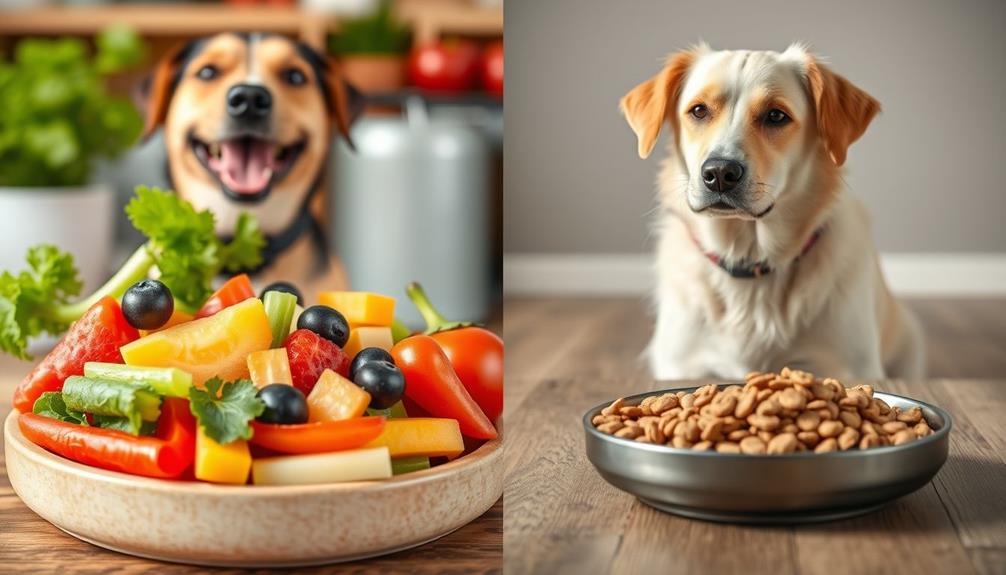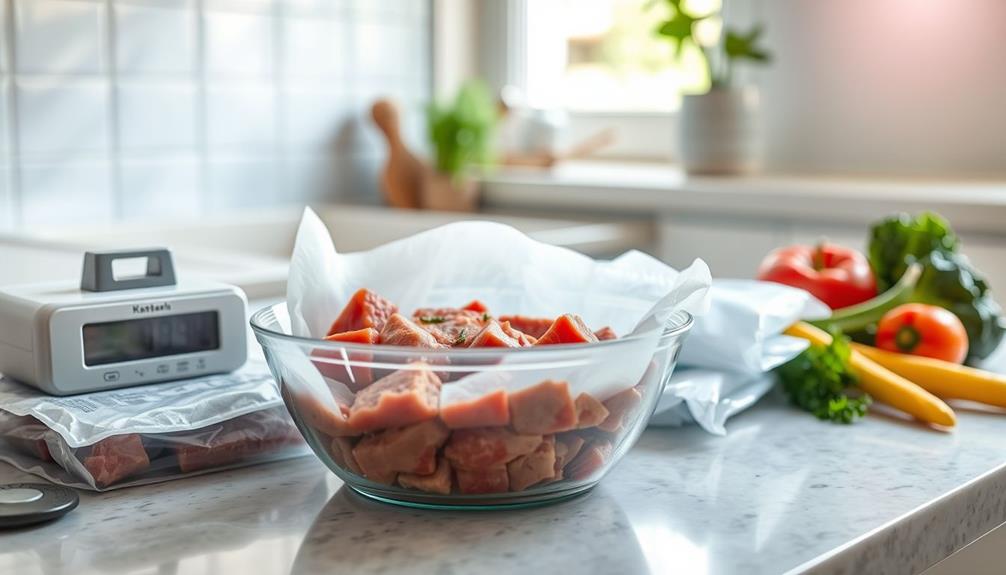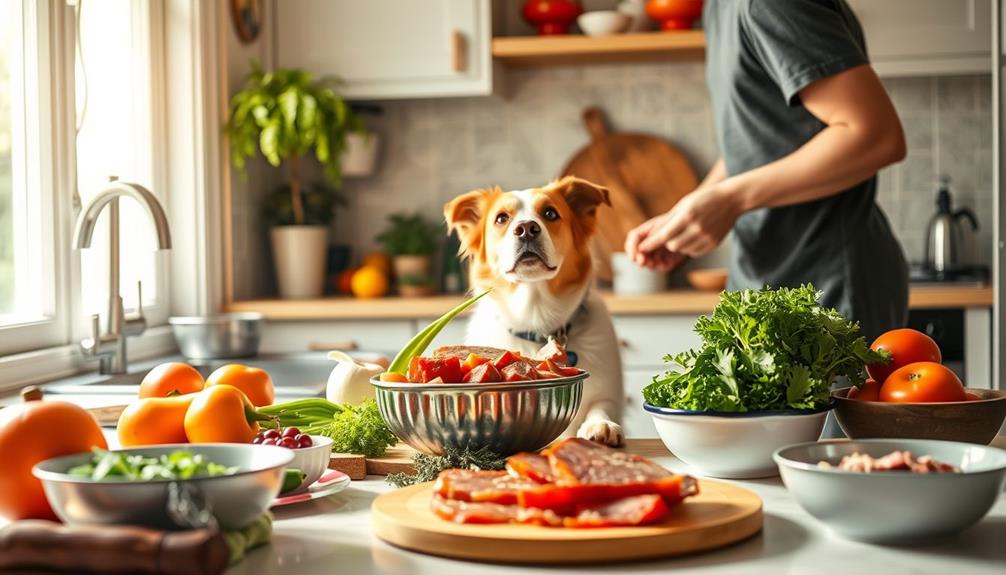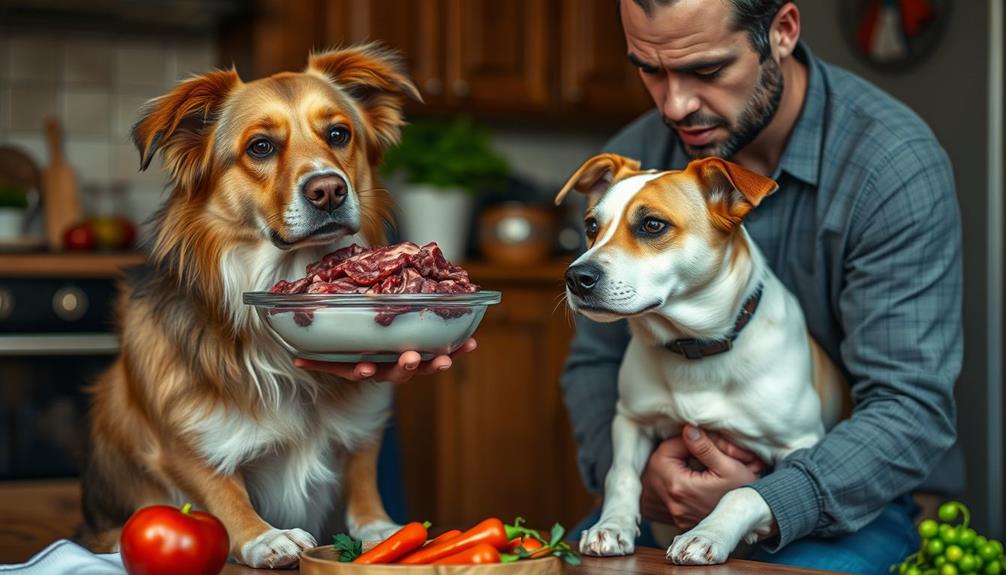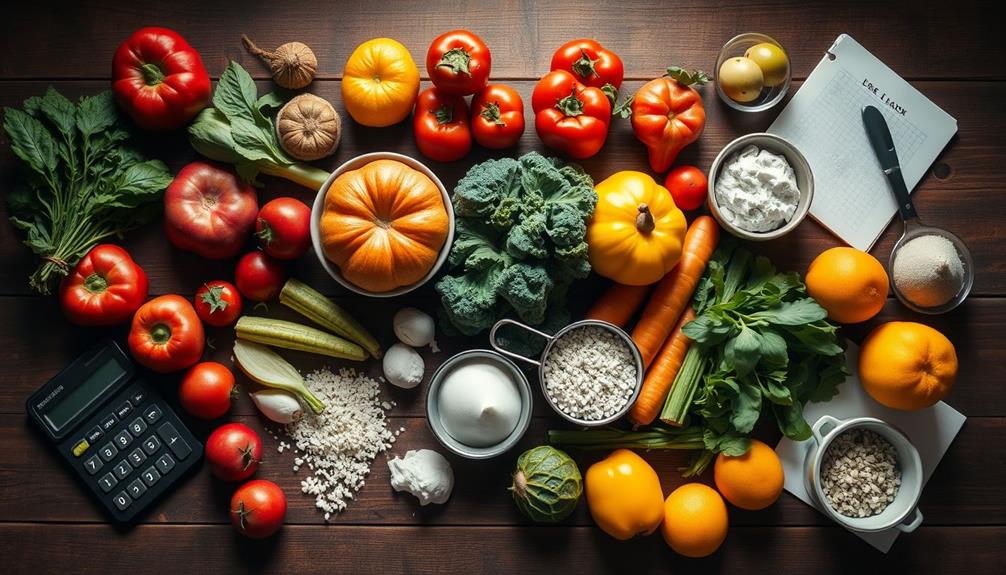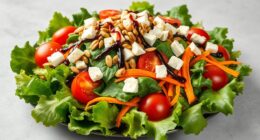Raw food diets can provide your dog with benefits like improved coat health and increased energy levels thanks to high protein content. However, there are substantial risks involved. The potential for bacterial contamination, like Salmonella, can lead to serious health issues. Furthermore, balancing nutrients is vital, as unbalanced diets may result in deficiencies. It's important to consult a veterinary nutritionist to guarantee your dog's diet meets their needs. While raw food might seem appealing, the risks and necessary precautions require careful thought. If you're curious about safe alternatives to raw diets, there's more to reflect on. When considering the benefits of raw and cooked food for your dog, it’s important to weigh the pros and cons of each. While raw diets can provide the benefits of improved coat health and increased energy levels, cooked diets have their own advantages. Cooking can help eliminate the risk of bacterial contamination and ensure that nutrients are more readily available for absorption. Consulting with a veterinary nutritionist can help you determine the best approach for your dog’s specific needs, taking into account the benefits of both raw and cooked food.
Key Takeaways
- Raw dog food can improve coat health and energy levels due to its high protein content and absence of fillers.
- A balanced raw diet is crucial; deficiencies in essential nutrients can lead to health issues.
- Raw diets carry risks of bacterial contamination, posing health threats to dogs and humans.
- Consulting a veterinary nutritionist ensures the diet meets AAFCO nutrient profiles and avoids potential deficiencies.
- Safer alternatives, such as commercial foods or cooked diets, provide balanced nutrition without the risks associated with raw feeding.
Overview of Raw Dog Food
When considering your dog's diet, raw dog food offers a unique approach that draws inspiration from their ancestral eating habits. The BARF diet, which stands for Bones and Raw Food, was popularized by veterinarian Ian Billinghurst in 1993. This diet typically consists of raw meat, bones, fruits, and vegetables, aiming to meet your dog's nutritional needs by mirroring what their wild ancestors consumed.
Proponents of raw dog food often point to health benefits like shinier coats, improved dental health, and increased energy levels. They also note that feeding raw food can lead to smaller stool sizes.
However, it's important to be aware of the potential health risks associated with this diet, including the need for proper food safety to mitigate risks of contamination, as discussed in hamster care and costs. Bacteria and parasites present in raw ingredients can pose serious threats, not just to dogs but to humans as well.
Because of these nutritional complexities and the potential for imbalances, seeking veterinary advice before altering your dog to a raw food diet is vital. A veterinarian or certified nutritionist can help guarantee that your chosen diet is complete and balanced, minimizing health risks while supporting your pet's overall well-being.
Benefits of Raw Diets
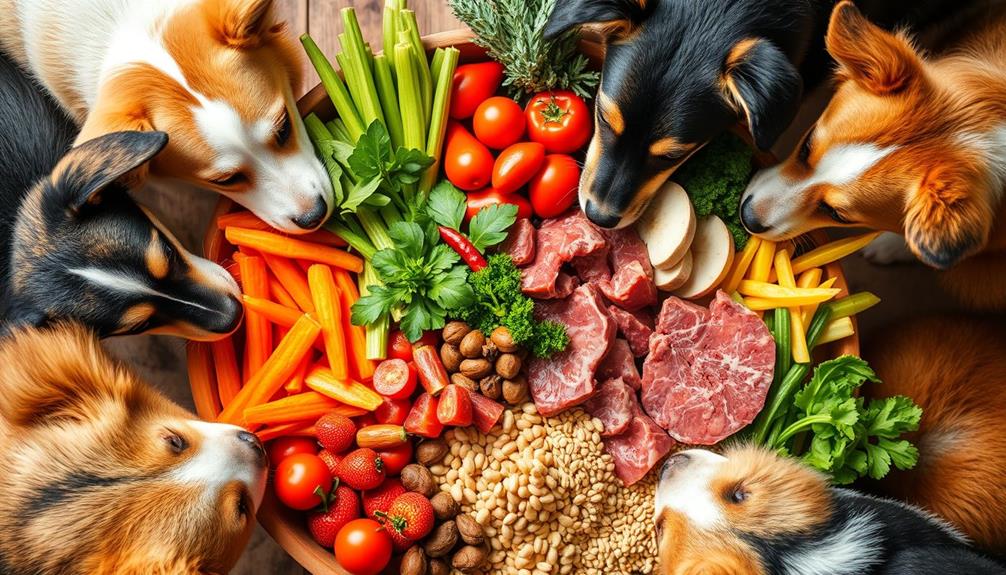
When you switch your dog to a raw diet, you might notice improvements in their coat health and energy levels.
Many owners report shinier fur and a more vibrant, active pup. This can be attributed to the high nutritional value and digestibility of raw foods, which may lead to better overall health and well-being.
Additionally, incorporating specific nutrients can enhance these benefits even further, such as those found in foods beneficial for managing gout symptoms.
These changes can lead to a happier and healthier companion overall.
Improved Coat Health
Many dog owners have noticed that altering to a raw food diet can lead to significant improvements in their pets' coat health. The high protein content in raw meats provides essential nutrients that contribute to a shinier coat and healthier skin.
Additionally, raw diets often include natural sources of antioxidants, which can enhance overall well-being and coat robustness, similar to the benefits of Cranberry Juice Consumption. With the inclusion of omega-3 and omega-6 fatty acids from fish and organ meats, your dog can benefit from reduced inflammation and enhanced coat quality.
Many owners report a noticeable change in coat texture and a decrease in shedding after changing to raw diets. This improvement can largely be attributed to the absence of fillers and artificial additives commonly found in commercial dog foods, which can often trigger allergies or irritations.
By eliminating these problematic ingredients, you may see better overall skin and coat conditions.
Additionally, raw foods provide increased hydration compared to dry kibble, promoting moisture retention that supports skin health.
With all these benefits combined, it's no wonder that many dog owners advocate for raw diets as a way to achieve a healthier, shinier coat for their furry friends. If you're considering this alteration, you might find that your dog's coat reflects the positive changes in their diet.
Enhanced Energy Levels
Switching your dog to a raw food diet can lead to a noticeable boost in their energy levels. Many dog owners report that their pets show greater enthusiasm during play and exercise after making the switch.
This increase in energy may stem from the higher protein content and nutrient density found in raw food diets compared to processed kibble, which often leaves dogs lacking crucial nutrients. Additionally, ensuring proper budgeting strategies for your pet's diet can help in sourcing quality raw ingredients without overspending.
Here are some potential benefits you might observe:
- Higher Protein Levels: Raw diets typically provide more protein, supporting muscle development and energy.
- Improved Digestion: Raw food is often easier for dogs to digest, leading to better absorption of nutrients.
- Enhanced Stamina: With ideal nutrition, your dog may experience improved stamina and vitality, especially during active play.
- Balanced Nutrition: Ensuring the diet is well-balanced helps prevent nutritional deficiencies that can lead to lethargy or health problems.
While many dogs thrive on raw food diets, it's crucial to maintain balance, so your furry friend stays energetic and healthy.
Nutritional Considerations
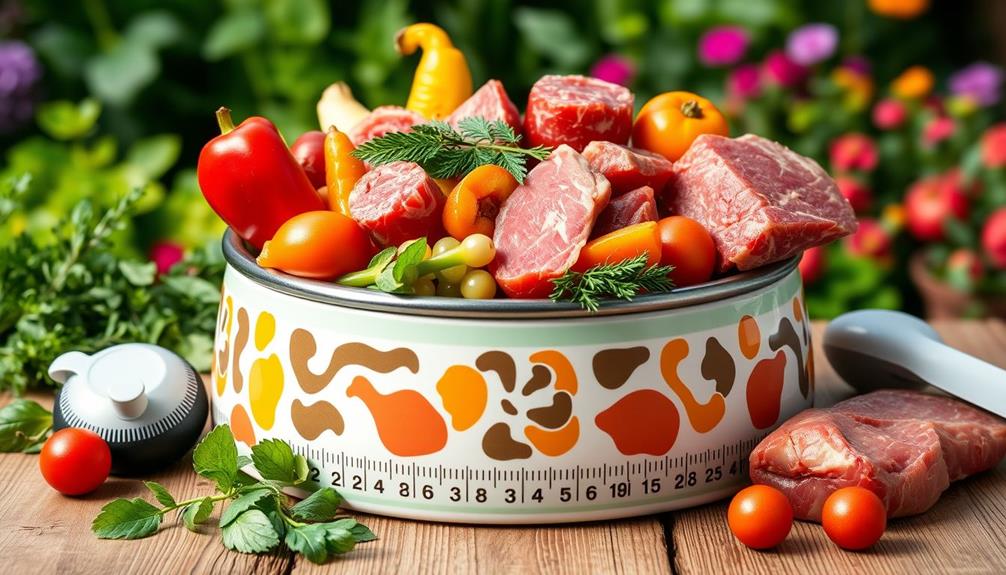
When considering a raw food diet for your dog, it's essential to guarantee a proper balance of nutrients.
A well-rounded diet can help optimize your dog's health and longevity, similar to how a balanced diet rich in fruits, vegetables, and whole grains benefits humans.
Without careful planning, you might face potential deficiencies that can harm your dog's health over time.
Consulting a veterinary nutritionist can help you create a diet that meets all of your dog's nutritional needs.
Nutrient Balance Importance
Maintaining a proper nutrient balance is vital for your dog's health, especially on a raw food diet. Many homemade raw diets may lack important vitamins and minerals, potentially leading to nutritional deficiencies that can harm your dog's overall well-being.
It's essential to guarantee that the raw diet meets the AAFCO nutrient profiles to provide balanced nutrition. Additionally, just as with human development, key domains of development play a significant role in how dogs grow and thrive, highlighting the importance of proper nutrition in their early stages.
Consider these key points when planning a raw diet:
- Consult a veterinary nutritionist: They can help you tailor a diet to your dog's specific needs.
- Monitor calcium and phosphorus levels: An imbalance can lead to serious bone problems over time.
- Include a variety of protein sources: This helps cover a broader range of nutrients.
- Regularly assess your dog's health: Keep an eye out for any signs of health issues that may arise from an unbalanced diet.
Potential Deficiencies Risks
A raw food diet can pose considerable risks if it lacks fundamental nutrients. Many homemade raw diets miss critical components like calcium and phosphorus, which are essential for bone health.
Healthy snacks for dogs can complement a raw diet, but it's important to verify that these additions don't compromise the overall balance of nutrients. This unbalanced nutrition can lead to serious nutritional deficiencies that jeopardize your dog's overall well-being. For instance, inadequate vitamin levels can result in growth issues in puppies and weaken their immune systems, making them more susceptible to illnesses.
Studies show that raw meat-based diets often fail to meet the AAFCO nutrient profiles, raising concerns about their long-term health impacts. Without the guidance of a veterinary nutritionist, you might struggle to create a balanced raw food diet that meets all your dog's nutritional needs.
The risk of deficiencies increases greatly with homemade raw diets, as they often lack the thorough formulation found in commercially prepared dog food that adheres to regulatory standards.
To guarantee your dog thrives on a raw food diet, it's important to pay attention to these potential deficiencies and consult a veterinary nutritionist. This way, you can avoid severe health complications and provide your furry friend with a well-rounded, nutritious diet.
Health Risks for Dogs
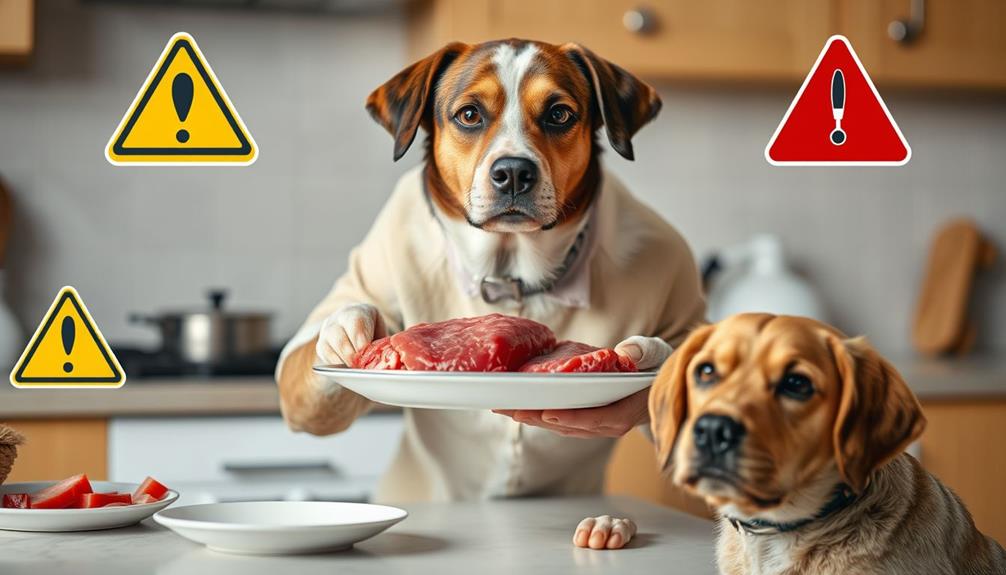
Raw food diets for dogs carry several significant health risks that every pet owner should be aware of. While many advocate for raw feeding, the potential dangers can't be ignored. When you're considering feeding a raw diet, keep these risks in mind:
- Bacteria Exposure: Raw food can harbor harmful bacteria like Salmonella and Listeria, posing risks not just to your dog but to your household. This concern is similar to the importance of discussing personal risk factors when it comes to health screenings.
- Gastrointestinal Issues: Dogs on raw diets may suffer from vomiting and diarrhea, which often signal bacterial infections linked to contaminated food.
- Choking Hazards: Meaty bones, while appealing, can lead to choking, broken teeth, or serious internal injuries, complicating your dog's health.
- Nutritional Deficiencies: Many raw diets lack balance, failing to meet the AAFCO nutrient profiles, which can lead to severe health issues over time.
Ultimately, while raw diets might seem beneficial, the associated health risks are significant. Always consult with your veterinarian before making any drastic changes to your dog's diet to guarantee their health and safety.
Bacterial Contamination Concerns
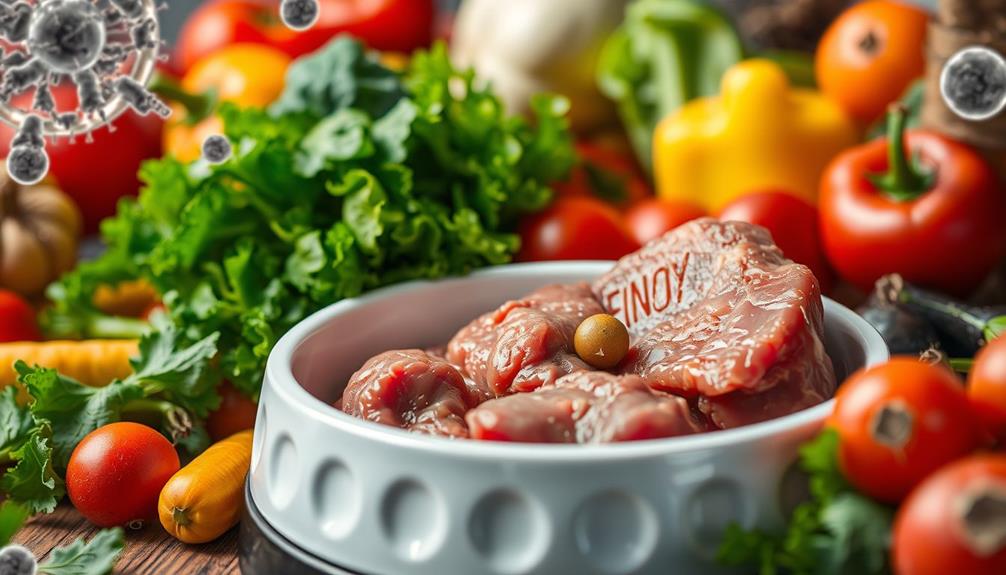
Bacterial contamination is a significant concern when considering raw food diets for dogs. Studies indicate that about 25% of raw dog food samples test positive for harmful bacteria like Salmonella and Listeria monocytogenes. This poses health risks not only for your pet but also for you, especially if you're handling raw food in your home.
Here's a quick comparison of the bacterial risks between raw dog food and commercial pet foods:
| Type of Food | Bacterial Contamination Risk |
|---|---|
| Raw Dog Food Diets | High (25% positive samples) |
| Commercial Pet Foods | Low (Minimal contamination) |
The CDC reports over 1.2 million salmonellosis cases annually in humans, emphasizing the importance of food safety measures. Dogs can carry bacteria without showing symptoms, which increases exposure risk, particularly for immunocompromised individuals, children, and the elderly. Implementing proper hygiene practices, such as washing your hands and disinfecting surfaces after handling raw food, is essential for minimizing these risks when feeding raw food to dogs.
Safe Handling Practices
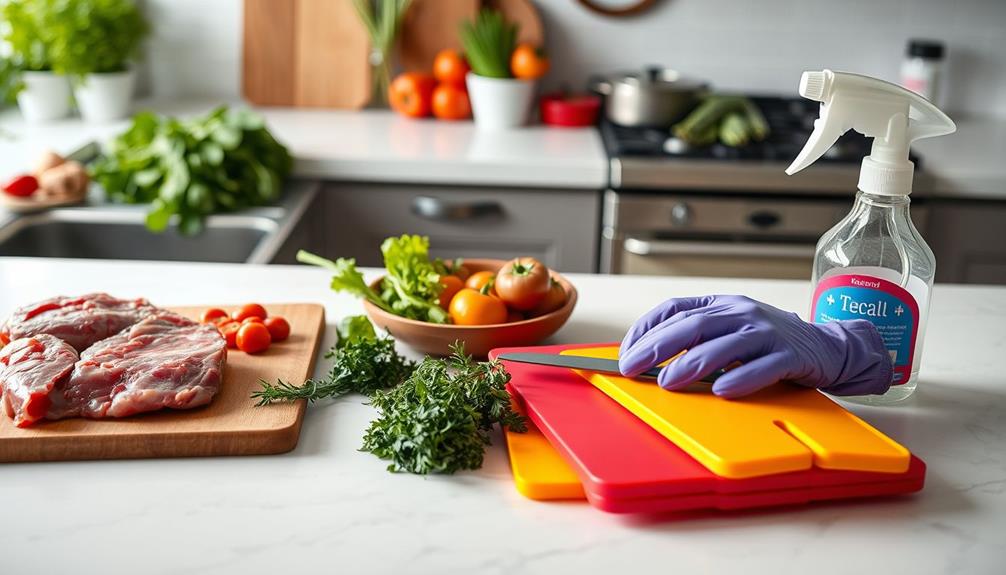
To guarantee your dog's safety while feeding them raw food, it's essential to adopt safe handling practices. Raw pet food can harbor harmful bacteria like Salmonella and Listeria monocytogenes, so being diligent is key. Incorporating essential oils like eucalyptus oil can support respiratory health for your dog, but remember that safety in food handling is paramount.
Follow these essential tips to guarantee a safe feeding environment:
- Always wash your hands with soap and water after handling raw food to prevent the spread of harmful bacteria.
- Use separate utensils, cutting boards, and dishes for raw food to avoid cross-contamination with other foods.
- Freeze raw food until you're ready to use it, and thaw it in the refrigerator or microwave to minimize bacterial growth.
- Promptly refrigerate or discard any raw food leftovers to reduce the risk of bacterial contamination.
Additionally, disinfect all surfaces and utensils that come into contact with raw food. This practice guarantees that your kitchen remains a safe feeding environment for your dog.
Expert Recommendations
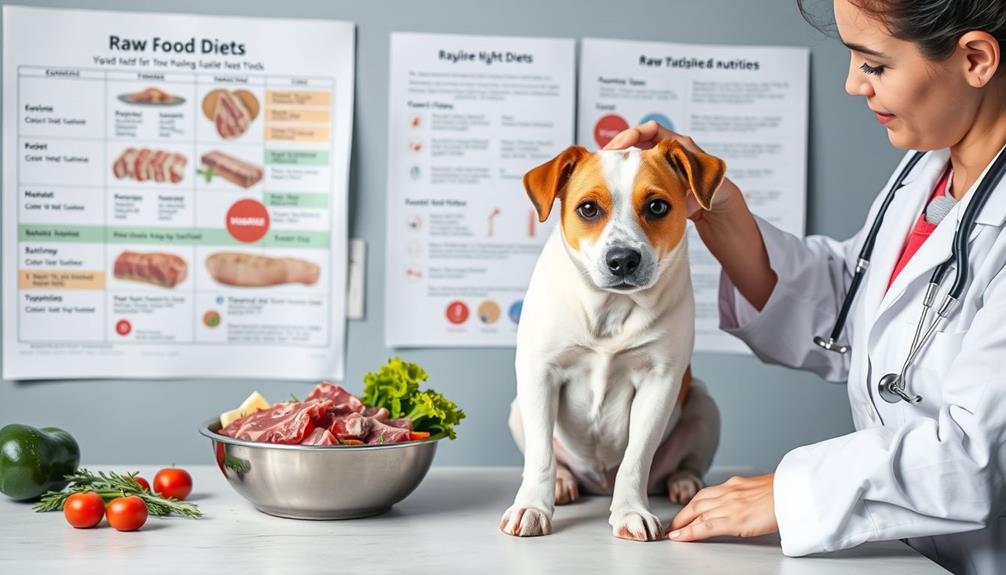
While considering a raw food diet for your dog, it's essential to heed expert recommendations to guarantee their health and well-being. Veterinary experts strongly advise consulting with a certified veterinary nutritionist before making any dietary changes. This ascertains your dog receives balanced nutrition tailored to their specific health needs.
Additionally, understanding the potential financial considerations for elderly care can be beneficial when planning for pet care, especially as pets age and may require specific dietary needs.
The American Veterinary Medical Association and the FDA have raised concerns about the potential risks associated with raw diets, including bacterial contamination from Salmonella and Listeria. To minimize these risks, hygiene is imperative when handling raw foods.
Many veterinary professionals recommend regular check-ups for dogs on raw diets, helping monitor any health issues or nutritional deficiencies that may develop over time.
It's also important to note that some animal care facilities refuse to accept pets on raw diets due to the associated health risks. This highlights the importance of weighing the benefits and drawbacks of such feeding practices.
Ultimately, prioritizing your dog's health and well-being means staying informed and cautious when considering a raw food diet, ensuring you consult with veterinary professionals to support your decision.
Client Perceptions and Veterinary Roles
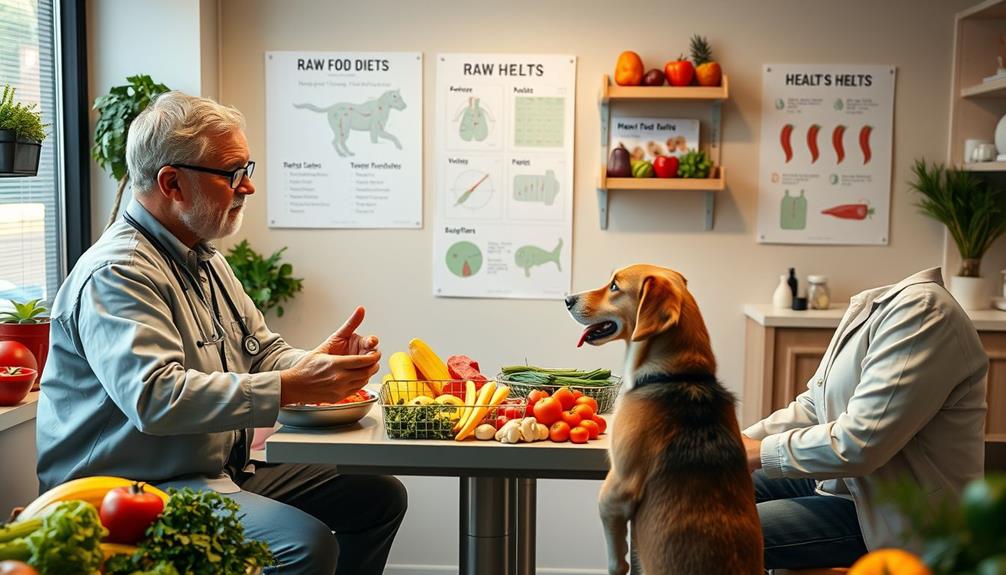
In recent years, client perceptions of raw meat-based diets (RMBDs) have become increasingly complex, often influenced by a mix of information and misinformation.
As a pet owner, you may find yourself maneuvering through various opinions about these diets. It's essential for veterinarians to engage in client education to clarify misconceptions and emphasize proper hygiene practices to protect both pets and their owners.
Veterinary associations have raised concerns about the risks linked to RMBDs, particularly the rising incidence of Salmonella.
To foster trust and accountability, veterinarians should adopt a supportive approach in dietary discussions, ensuring that clients feel heard and informed.
Here are some key points to take into account:
- Address common misconceptions surrounding RMBDs.
- Promote hygiene practices to minimize health risks.
- Document dietary recommendations and client decisions for accountability.
- Stay updated on research and trends related to raw diets.
Alternatives to Raw Diets
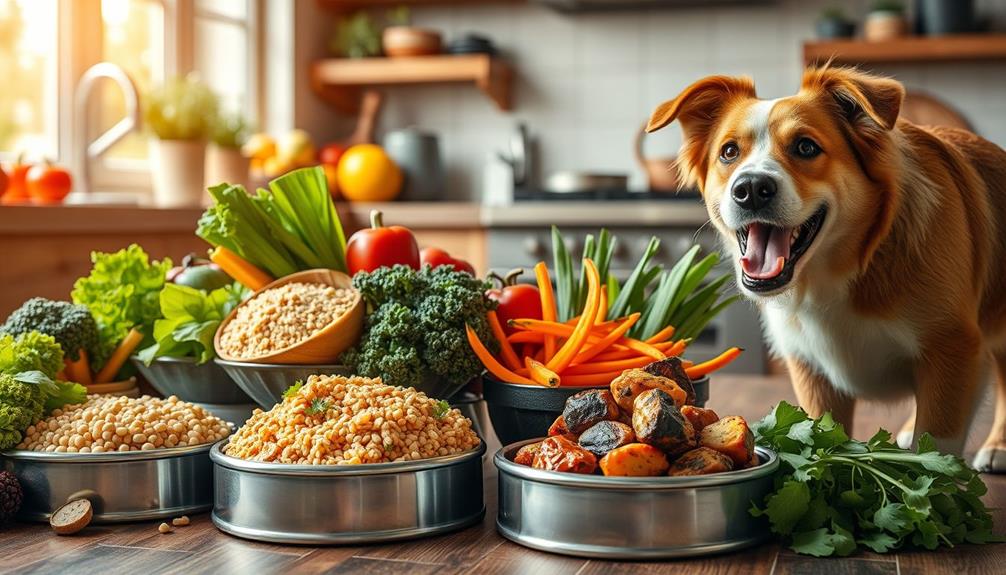
If you're considering alternatives to raw diets for your dog, you're in luck—there are plenty of options that offer balanced nutrition without the associated risks.
Commercial foods designed to meet AAFCO nutrient profiles provide a safe, balanced diet, minimizing the dangers of bacteria in raw diets. Kibble is convenient, easy to store, and some brands even help reduce dental plaque and tartar buildup, promoting better oral health.
Cooked diets are another excellent alternative. These can be homemade or commercially prepared meals that cater to your dog's specific nutritional needs. This option is particularly beneficial for dogs with health conditions or households with vulnerable individuals, like children or the elderly.
Additionally, subscription services have gained popularity, delivering pre-portioned, human-grade meals right to your door. This guarantees your dog receives balanced nutrition without the risks linked to raw diets.
Consulting with your veterinarian can help you choose the best option tailored to your dog's unique needs.
Frequently Asked Questions
What Are the Disadvantages of Raw Food for Dogs?
Raw food diets can expose your dog to harmful bacteria, lead to nutritional imbalances, and pose choking hazards from whole bones. They're often time-consuming and expensive, making them less practical for many pet owners.
Why Is Raw Food Not Recommended for Dogs?
Raw food isn't recommended for dogs due to the significant risk of bacterial contamination, potential nutritional deficiencies, and the danger it poses to human health, especially for vulnerable household members. Consider safer, balanced options instead.
Do Vets Recommend a Raw Diet for Dogs?
Most vets don't recommend a raw diet for dogs due to health risks like bacterial contamination. They often suggest commercially prepared foods instead, ensuring balanced nutrition and safety for your furry friend. Always consult a professional.
What Are the Risks of Eating Raw Food?
Eating raw food can expose you to harmful bacteria like Salmonella and Listeria, posing serious health risks. These pathogens can infect both you and your dog, leading to severe gastrointestinal issues and other complications. Stay cautious.
Conclusion
In summary, while raw diets can offer some appealing advantages, they also come with potential pitfalls. It's vital to evaluate your dog's unique needs and health before diving into the raw food frenzy. By balancing benefits and risks, you can make a well-informed decision. Always consult your vet to guarantee your furry friend's food is safe and suitable. With careful evaluation and safe practices, you can create a happy, healthy meal plan for your beloved buddy.

